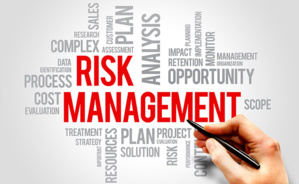There are five (5) main styles of conflict resolution:
- COMPETING IS ASSERTIVE AND UNCOOPERATIVE
- ACCOMMODATING IS UNASSERTIVE AND COOPERATIVE
- AVOIDING IS UNASSERTIVE AND UNCOOPERATIVE
- COLLABORATING IS BOTH ASSERTIVE AND COOPERATIVE
- COMPROMISING IS MODERATE IN BOTH ASSERTIVENESS AND COOPERATION
It is convenient we focus on the most successful approach, which usually happens to be a ‘collaborative solution’, since it also translates to a win-win action. To arrive to such approach it is vital to get to the facts. We need to allow our team to embrace concrete neutral pieces of information and separate the facts from emotion/s.
Keeping to facts and measurable data: if individuals stay with facts and measurable data, it is rather difficult to dispute an opinion. Guiding the answers to facts and measurable data will allow us to gather information that can aide to move from position to interests.
Below we list the pre-stages that we must go through:
a) We sight for a collaborative solution
b) We work together
c) We listen to everybody's points of interest, moving our focus from position to interest
d) We are now at the end where a decision is being made.
It should be emphasized: separating the emotion out of it and establishing the core issues with respect to the facts that are involved in the resolution process.
Keeping to facts and measurable data: if individuals stay with facts and measurable data, it is rather difficult to dispute an opinion. Guiding the answers to facts and measurable data will allow us to gather information that can aide to move from position to interests.
Below we list the pre-stages that we must go through:
a) We sight for a collaborative solution
b) We work together
c) We listen to everybody's points of interest, moving our focus from position to interest
d) We are now at the end where a decision is being made.
It should be emphasized: separating the emotion out of it and establishing the core issues with respect to the facts that are involved in the resolution process.
Moreover, it is relevant to assess:
-Who are the actors involved and who do they represent?;
-Is there any past history linked to the conflict? If so, we need to identify what the core issues are;
-We must identify if it is negotiable: are these core issues something that can be worked on?;
-Are there any common interests? How our team can work together to get to an achieved goal?;
-What values we have with respect to conflict? There could be certain core values that do not allow them to move forward to transform the situation - i.e. core values individual currently have which are not in line with the institution’s mandate and corporate values.
Resolution stages:
a) Apply active listening skills when dealing with conflict
b) Recognize conflict and know when to intervene
c) Review the five approaches to conflict (above) and establish a sustainable channel
d) Create an effective action plan and most importantly, produce an agreed upon solution.
-Who are the actors involved and who do they represent?;
-Is there any past history linked to the conflict? If so, we need to identify what the core issues are;
-We must identify if it is negotiable: are these core issues something that can be worked on?;
-Are there any common interests? How our team can work together to get to an achieved goal?;
-What values we have with respect to conflict? There could be certain core values that do not allow them to move forward to transform the situation - i.e. core values individual currently have which are not in line with the institution’s mandate and corporate values.
Resolution stages:
a) Apply active listening skills when dealing with conflict
b) Recognize conflict and know when to intervene
c) Review the five approaches to conflict (above) and establish a sustainable channel
d) Create an effective action plan and most importantly, produce an agreed upon solution.
In the context of conflict situations, related to middle size teams, individuals tend to emotionalize a particular position, which generates some obstacles in the process to try to seek a resolution and move through the resolution stages. Once we reach the interest level, which is aligned with what our total objectives are, our team should be able to separate the two -interests and objectives- in order to identify the interest/s in the conflict scenario, we are also on an advanced step of resolution.
Many people want to focus on the reasons why a solution cannot be reached versus to try to explore the reasons why it can be possible. It is a ‘comfort zone’ people get into. They have their position that they have decided to take. Therefore, they tend to shelter and protect themselves from anything that might suggest a different alternative approach. Before we take a final decision -a final call of action- we are going to be required to provide every member of the team a recap of what was developed across each one of the resolution stages.
Furthermore, we should deal with making an effort to get to every individual to share with us, not only what the issue is, but how they would resolve it. Here we find the final resolution step: design the action plan.
Many people want to focus on the reasons why a solution cannot be reached versus to try to explore the reasons why it can be possible. It is a ‘comfort zone’ people get into. They have their position that they have decided to take. Therefore, they tend to shelter and protect themselves from anything that might suggest a different alternative approach. Before we take a final decision -a final call of action- we are going to be required to provide every member of the team a recap of what was developed across each one of the resolution stages.
Furthermore, we should deal with making an effort to get to every individual to share with us, not only what the issue is, but how they would resolve it. Here we find the final resolution step: design the action plan.
Posted by Christopher Oscar de Andrés, on Friday, June 15th 2018 at 09:07
|
Comments (0)
Category
Recent posts
Archives
#Team Management #Gestión de Equipo International Business Development #Gestión de Equipo Comercial
5 MISSION AREAS IN HORIZON EUROPE
Acceso universal al tratamiento del sida
ACNUR
actor Pepe Sancho
ADHESIÓN DE CROACIA A LA UE
advertising / teleshopping spots
Africa
Alianza Atlántica
Alianza del Pacífico
Alibaba
Alibaba Group Holding Ltd.
AlipayApp
Amnistía Internacional
Ana Pastor
AnálisisyGestiónInteligenteDeDatos
Angela Merkel
Banco Central Europeo (BCE)
Banco Mundial
Barack Obama
batalla del sector del taxi y VTC
Benjamin Franklin
Bill Gates
binomio chavismo / antichavismo
Blockchain opportunities in international public health care sector
Blockchain technologies in health care
Blog Posts
Boris Johnson
Brexit
BUILDING THE CITIES OF THE FUTURE
China
Comisión Europea
Coronavirus
Covid-19
COVID-19
Cybercrime
David Cameron
Editorial Universitas SA
EU Convention of Human Rights
European Commission
FMI
Henrique Capriles
Human Rights
ICAA
International Business Development
Jack Ma
Jean-Claude Juncker
Mariano Rajoy
Obama
ONU
OSCE
The Council of Europe
Thomas Hammarberg
UNED
UNHCR
Unión Europea
Vladímir Putin








